Spatial
Seth Trocio, William Creighton, Mathew Green, Chris Gandhi Te Reo o Te Hau - The Voice of the Kōkōhau
-
Ngā Kaimahi / Team Members
Seth Trocio, William Creighton, Mathew Green, Chris Gandhi -
Kaitautoko / Contributors
Tegan Dunn, Steve Cassidy, Pip Cheshire, Peter Boardman, Keith Mann, Richard Didsbury, Joe Hammond -
Client
Brick Bay Wines & Sculpture Trail
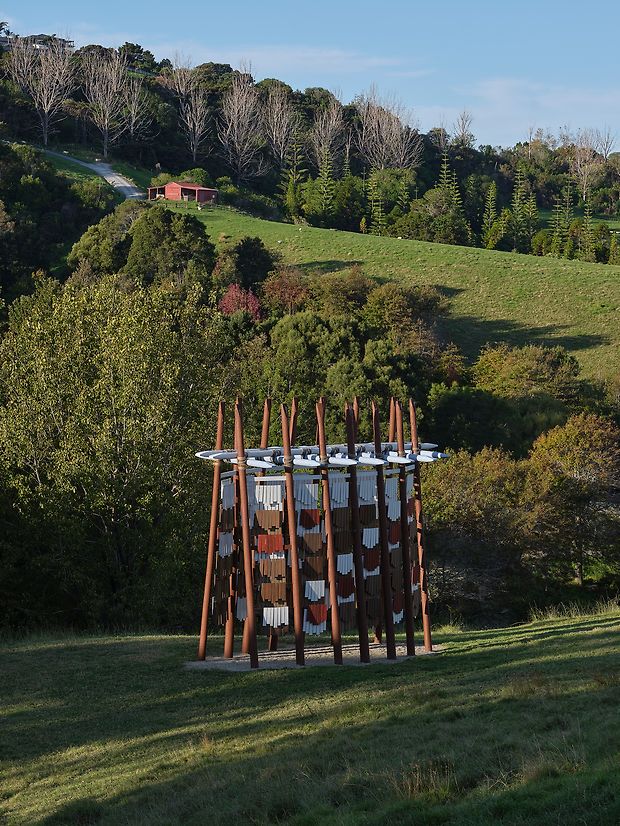
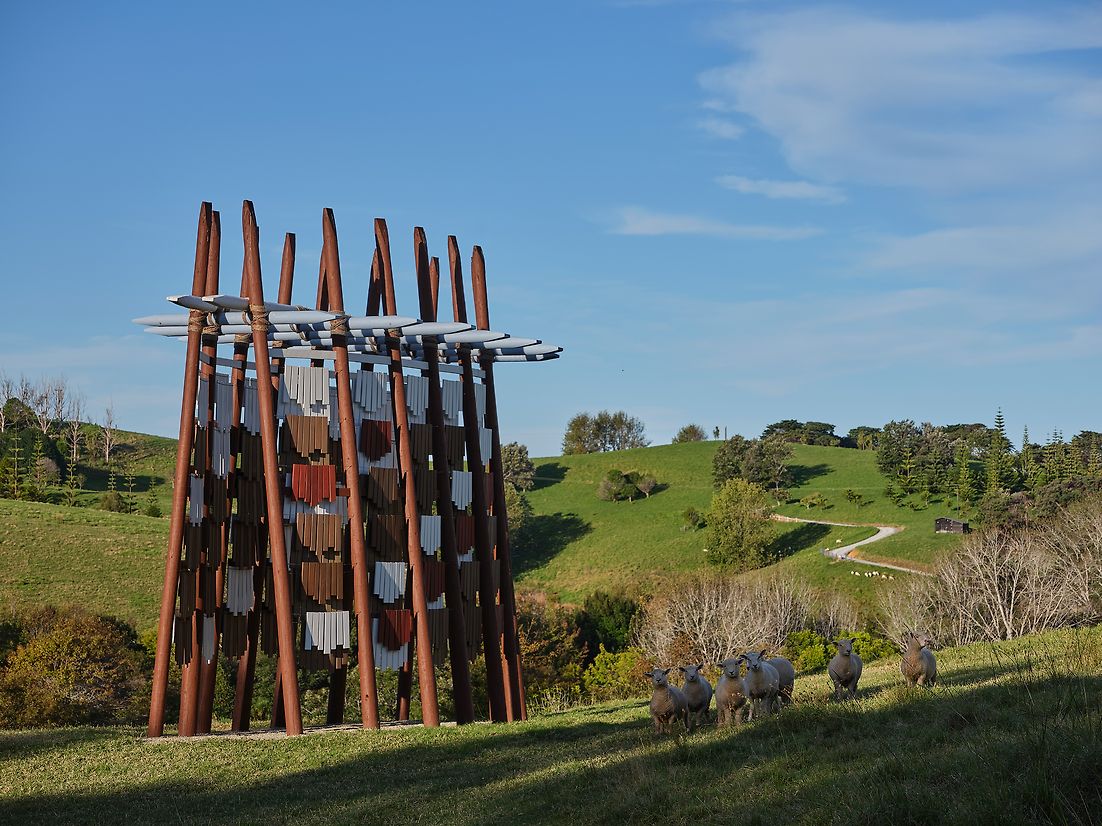
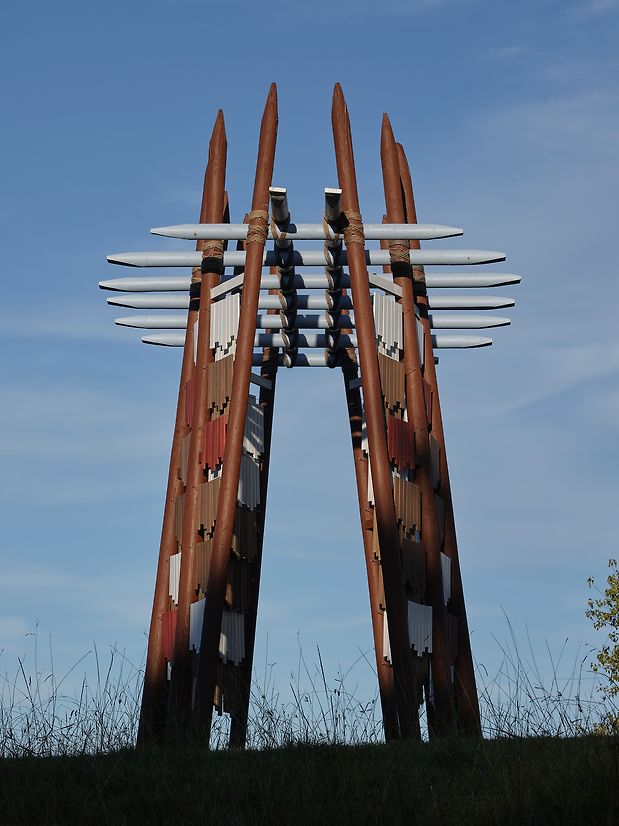
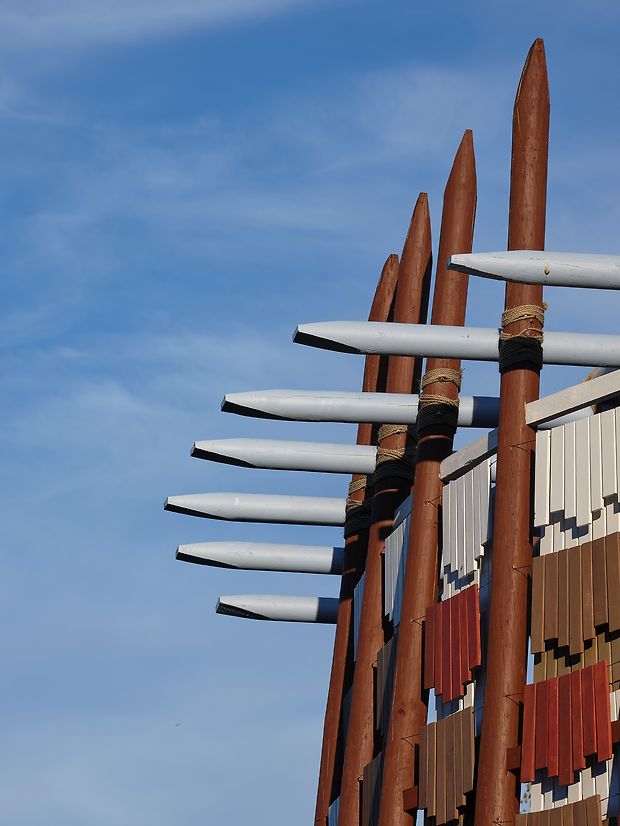
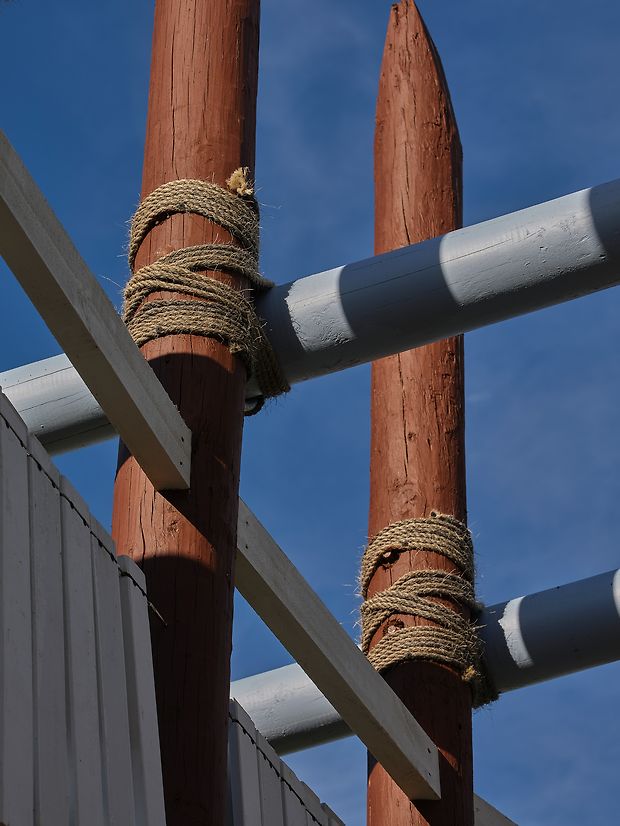
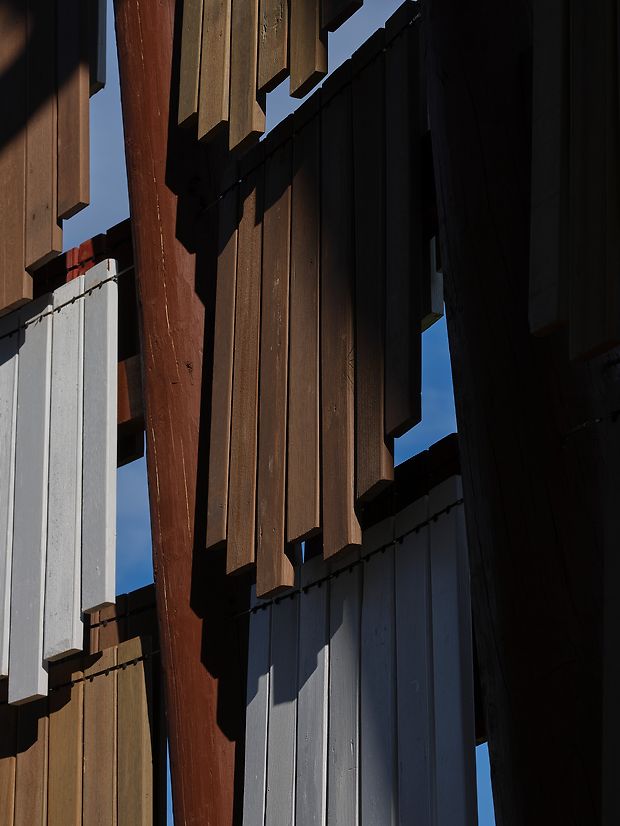
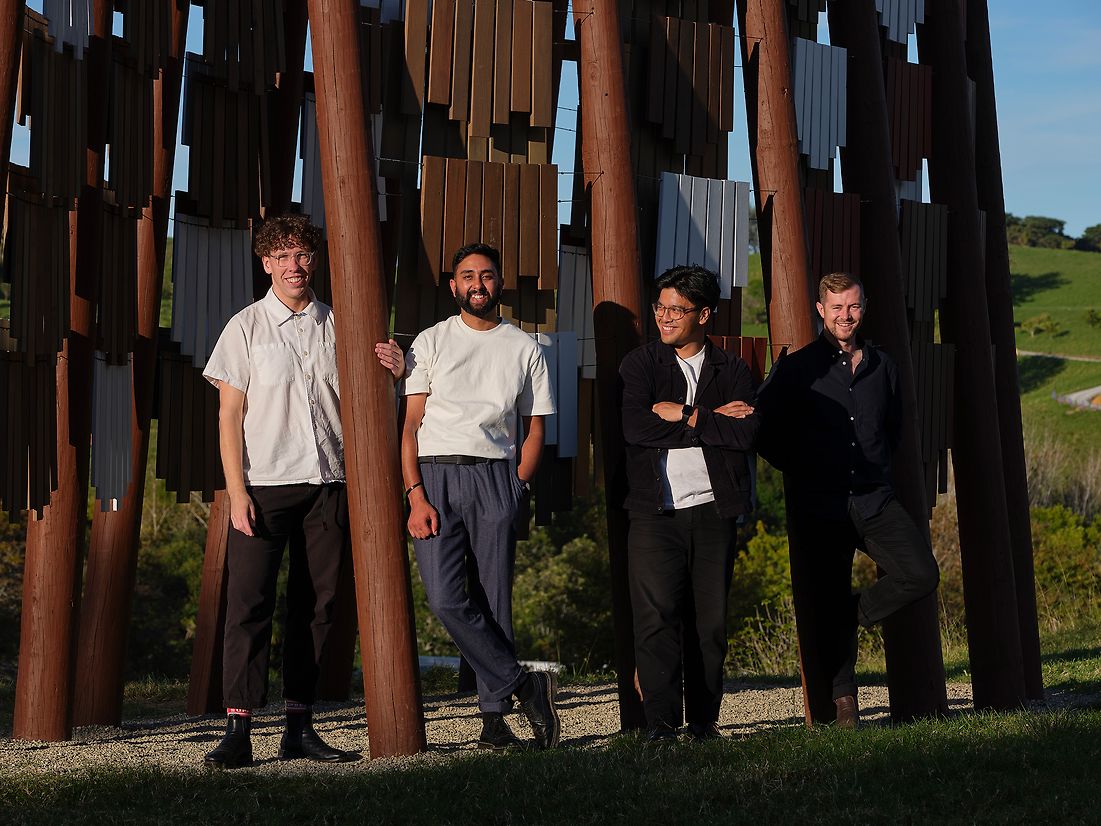
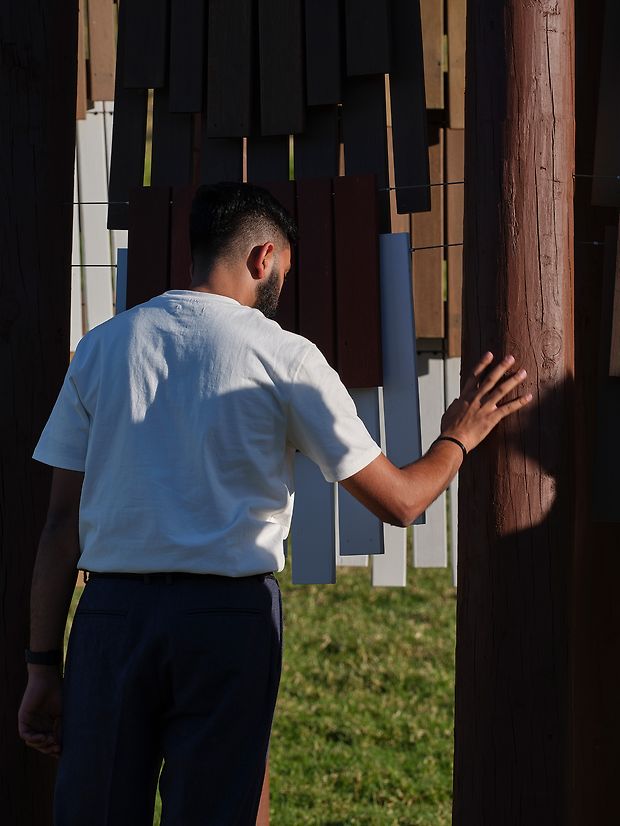
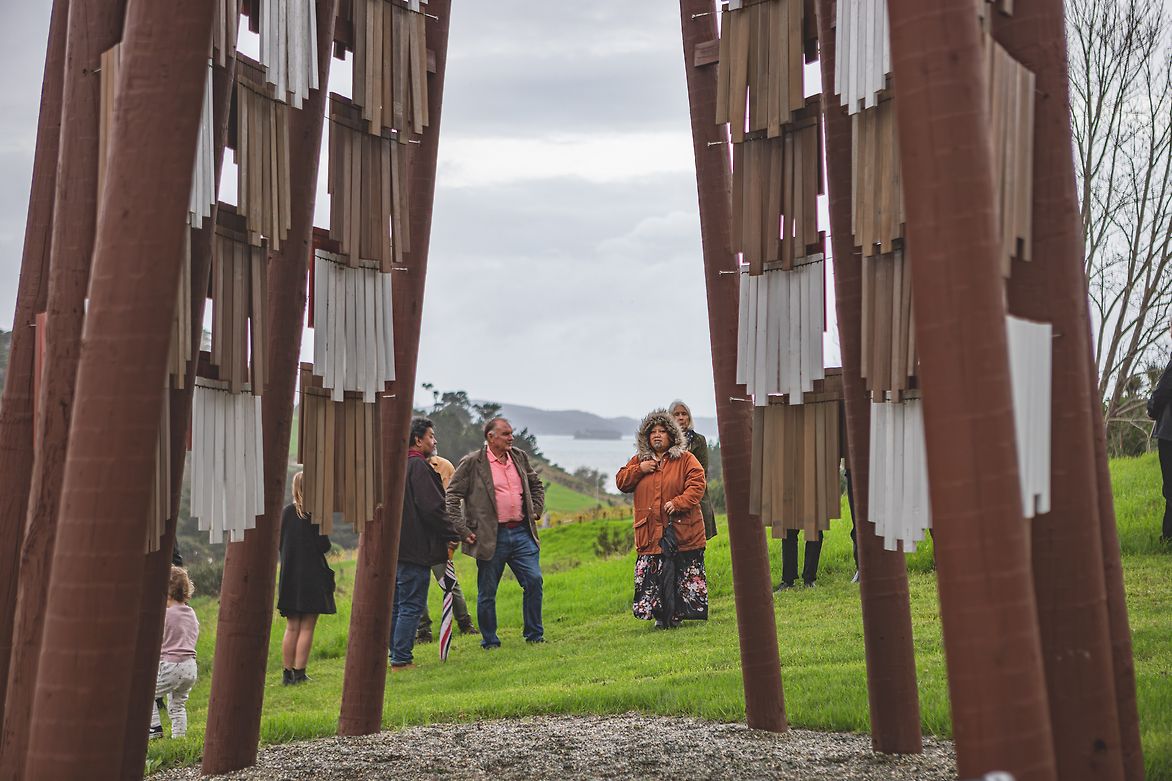
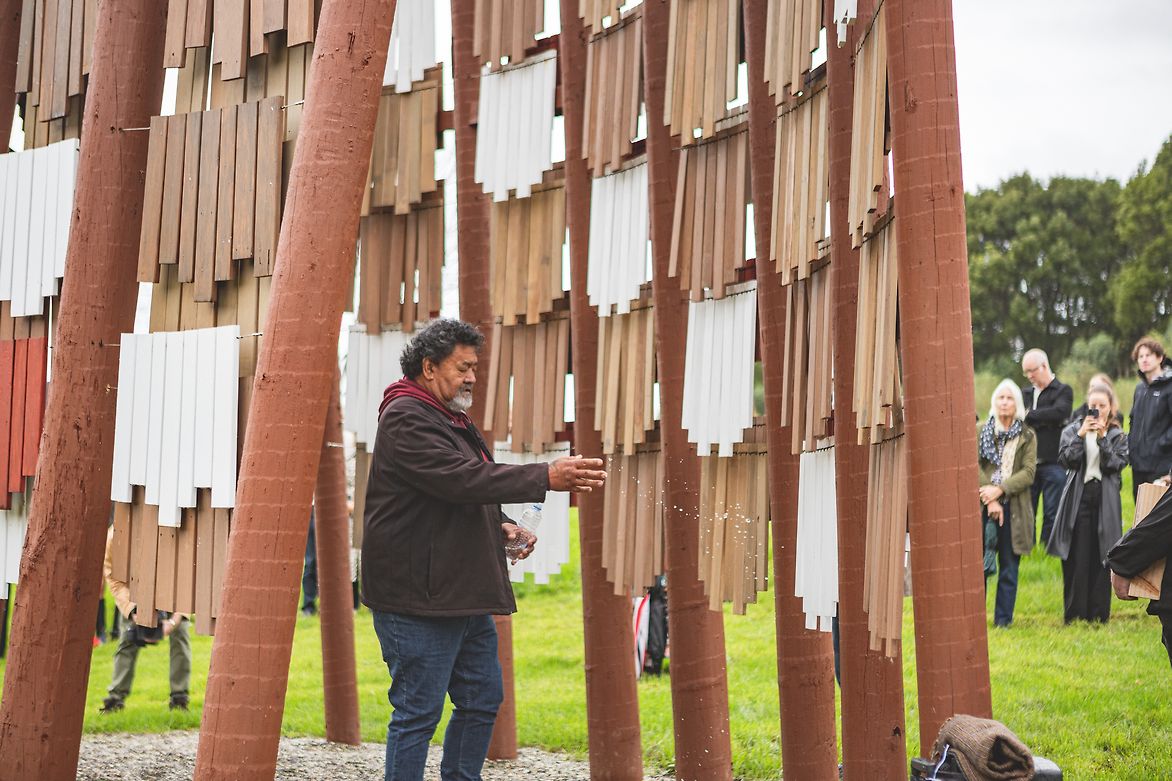
Description:
Te Reo o te Hau, designed and built by architectural graduates William Creighton, Mathew Green, Chris Gandhi, and Seth Trocio, is the winning entry for the 2023 Brick Bay Folly Competition. The brief gives graduates of architecture an opportunity to merge sculpture and architecture. The concept design intersects a non-thetic connection to the site with cultural storytelling. Their project shows thoughtful considerations of sustainability and to local iwi, Ngati Manuhiri’s cultural heritage.
The project's architectural aesthetics are a reflection of vernacular waka construction methods, the structure is draped by a traditional kākahu. When inside the folly, the kākahu wraps the occupants in a bowed oval shaped cloak of manaakitanga. Visitors are invited to pause for a moment, the verticality of the poles draw their eyes upward toward the sisal lashed junctions joining the structure together. The inclined posts frame the view of the sea, the bay in which sits Te Hauturu-o-Toi / Little Barrier Island, the final resting place of the god of wind. The team were gifted this pūrākau (mythological narrative), which was then embodied into architectural form through the unseen forces which act upon the swinging panels. When the wind is stronger, the louder the folly becomes, as panels knock together in orchestral unison.
The careful selection of colors, including hues of brown, red, and white, reference the natural tones you may see when navigating along the sculpture trail. Sustainability was a key consideration throughout the design and construction process. By salvaging and repurposing the kwila panels, the team minimized waste. Rigorous testing of materials, paints, and stains ensured both the aesthetic, and impact of the folly were resolved by the team through the early design phase. Where possible local or recycled sourcing was prioritised, and the employment of simple construction methods reduced unnecessary misuse.
Central to the project is the concept of embodying the kōkōhau (wind's) voice. Through the clever use of tension cables, the decking panels hang freely, creating an interplay of movement in response to the wind. The aim of this was not only to embody the cultural narrative, but to connect those experiencing the folly, to the unseen natural qualities of the site. The use of recycled decking panels as an oversized wind chime adds a touch of whimsy, engaging visitors in an interactive and immersive experience, reviewing how sculptures may often be seen as simply objects in space.